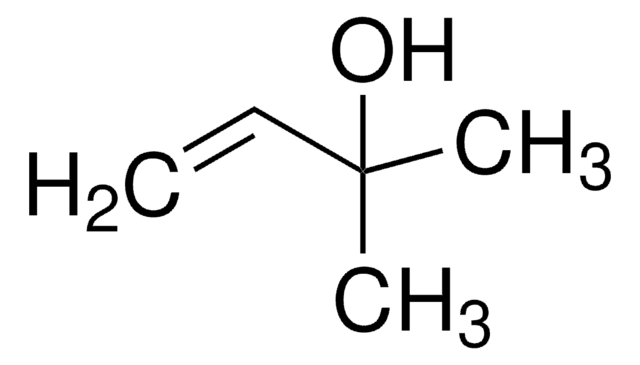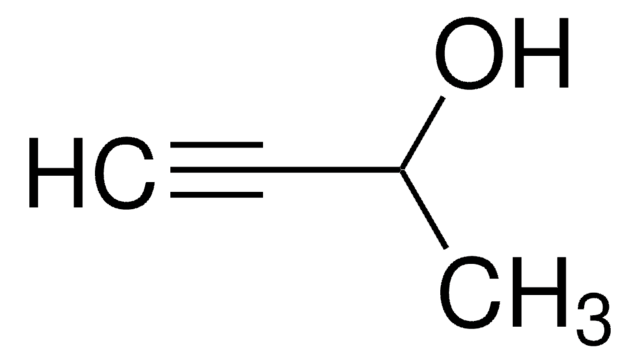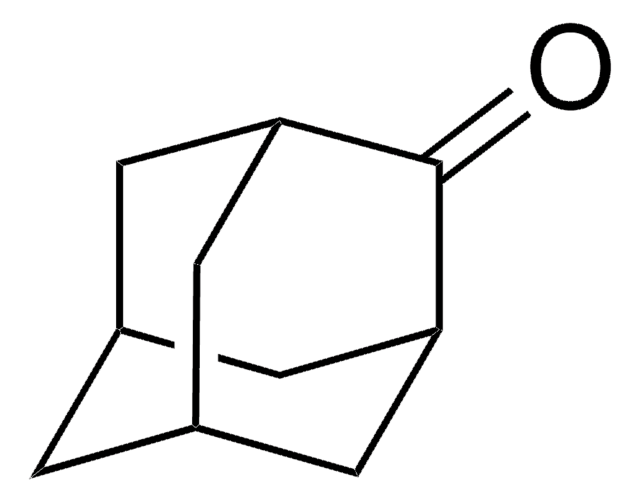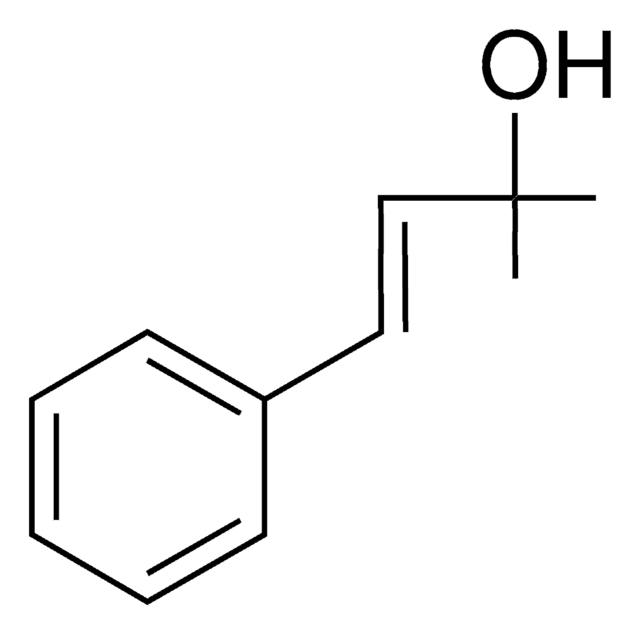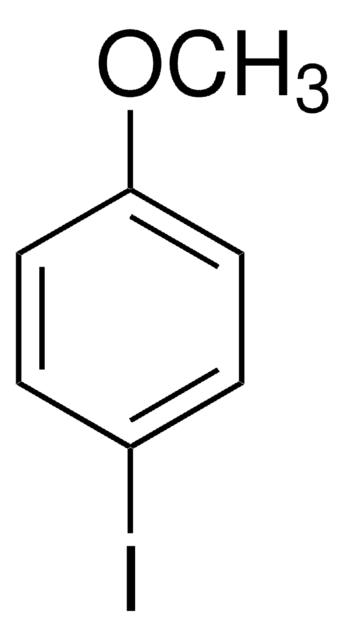129763
2-Methyl-3-butyn-2-ol
98%
Synonym(s):
Dimethyl ethynyl carbinol
About This Item
Recommended Products
vapor pressure
15 mmHg ( 20 °C)
Quality Level
Assay
98%
form
liquid
autoignition temp.
662 °F
expl. lim.
16.6 %
refractive index
n20/D 1.42 (lit.)
bp
104 °C (lit.)
mp
2.6 °C (lit.)
density
0.868 g/mL at 25 °C (lit.)
functional group
hydroxyl
SMILES string
CC(C)(O)C#C
InChI
1S/C5H8O/c1-4-5(2,3)6/h1,6H,2-3H3
InChI key
CEBKHWWANWSNTI-UHFFFAOYSA-N
Looking for similar products? Visit Product Comparison Guide
General description
Application
- Aryl-2-methyl-3-butyn-2-ols via Pd-catalyzed Sonogashira coupling reaction with various aryl bromides.
- 2-Methyl-3-buten-2-ol (MBE) by Pd/γ-Al2O3 catalyzed selective hydrogenation reaction. MBE is applicable as an important intermediate in the synthesis of vitamin A.
- Diarylacetylenes via Pd-catalyzed Sonogashira coupling reaction with aryl chlorides in the presence of Cs2CO3 as a base.
- Optically active propargylic alcohols by enantioselective addition reaction with various aldehydes in the presence of Zn(OTf)2 and N-methylephedrine.
Signal Word
Danger
Hazard Statements
Precautionary Statements
Hazard Classifications
Acute Tox. 4 Oral - Eye Dam. 1 - Flam. Liq. 2 - Repr. 2 - STOT SE 3
Target Organs
Central nervous system
Storage Class Code
3 - Flammable liquids
WGK
WGK 1
Flash Point(F)
66.2 °F - closed cup
Flash Point(C)
19 °C - closed cup
Personal Protective Equipment
Choose from one of the most recent versions:
Already Own This Product?
Find documentation for the products that you have recently purchased in the Document Library.
Customers Also Viewed
Our team of scientists has experience in all areas of research including Life Science, Material Science, Chemical Synthesis, Chromatography, Analytical and many others.
Contact Technical Service
